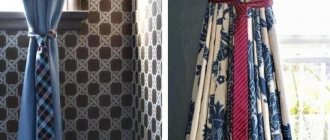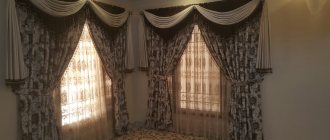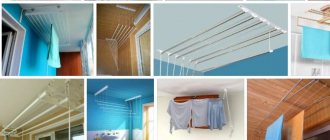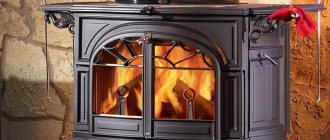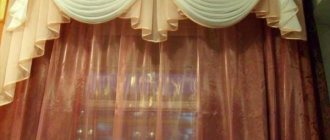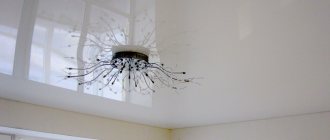The traditional design of a window opening is thick drapes and light curtains, but an important role in textile decoration is given to accessories, which are special holders - hooks for grabs. Considering that these elements are an additional detail for decorating curtains, they are selected in two directions: in accordance with the stylistic decision of the room and the style of textiles. Structural features, design and dimensions of the holder affect both the appearance of the products and the overall visualization of the window opening. Depending on their location, they can expand or narrow the window.
Curtain hook as one of the types of holders
The most common curtain holder these days is the hook. Due to the simplicity of the design, it is very easy to use and does not fail. Choose a hook taking into account the features of the interior and the color palette in which the room is designed.
Iron holders are the most durable and look much more noble than plastic models
Curtain holders come in metal and plastic.
Experts advise giving preference to the first ones, because they are the most durable. But, if you are looking for an economical pick-up, then a plastic hook is completely suitable for you.
There are 3 methods of attaching a hook:
- Level with the window sill. This option is perfect if you want to fill the room with sunlight.
- Above the window sill level. This mount will fit well into the interior if you have a narrow window opening.
- Below the window sill level. This fastening allows you to achieve a visual narrowing of the window opening.
It is recommended to attach the hook below the level of the window sill if you use thick curtains.
Hook as a type of curtain holder
The most popular decorative elements of a curtain composition are a pair: a holder made in the form of a hook and a curtain tieback. Most often, such curtain holders are made of metal, and can be decorated with forging patterns or various elements.
In this case, the place where the curtain holder is attached in the form of a hook plays a very important role, namely:
- At the same level with the window sill - this option for attaching tiebacks is considered the most common for use in living rooms, bedrooms and offices and allows more sunlight to come in. Above the window sill level - suitable for narrow windows using long tiebacks, creating an Italian style curtain composition. Below the window sill level – this fastening of the clamp visually narrows window openings that are too wide and is most often used for heavy and thick curtains in living rooms and halls.
Nowadays you can buy any hook-holders, while you can make curtain hooks yourself.
Making curtain tiebacks with your own hands
You can make a non-standard pick-up with your own hands, if you have the necessary and a little imagination. For this work you will need wire, a hook, decorative items (you can use buttons or fabric flowers), scissors, glue, pliers, a needle, threads, iron rings, tassels and wire cutters.
Unique curtain holders can be made from old disks and satin ribbons
The most common option is a lift with pendants. It is suitable if your curtains are made of thin, for example, linen, cotton or organza.
The procedure for producing a pickup with pendants is as follows:
- Using scissors, cut approximately 40 or 50 cm of wire.
- Then fold the wire in half and string beads or other decorative ones onto it.
- Twist the resulting workpiece into several turns.
- After that, hang one large decorative element on each end of the tieback.
- Do a couple of twists.
- Unwind the tourniquet a little, thread one end of the workpiece and twist it with the rest of the end.
- Twist the ends of the wire and thread them through the cord, then cut them off.
- At the ends of the cord, make loops that you will put on the hook.
Fabric tiebacks can be decorated with tassels or eyelets
If you want to do a fabric pick-up, follow the following algorithm:
- Fold the wrong side and right side of the fabric and sew around the entire perimeter.
Don't forget to leave a small piece of fabric unsewn. - Turn the tie back out and sew up the previously left area.
- Fold the fabric at each edge to a distance equal to the thickness of the ring.
- After this, thread the ring and sew up the seam allowance using plain threads and a needle.
- Place the purchased product on the curtain.
MK for creating grabs
In order to create original curtain tiebacks with your own hands, you can read the master class or show your imagination by coming up with an original decoration yourself.
To make a pick-up according to the proposed master class you will need:
- Unusual buttons. Cord of matching color. Glue.
We glue the buttons to the cord in different sequences and wait for the glue to dry. After this, we wrap the curtain several times with the finished cord and attach it to the holder.
Buttons combined with your ingenuity will help you make great curtain ties
Another master class will tell you how to use a piece of twine as a grab. To do this, twine of the required length is fastened with metal rings, carabiners or other small metal objects and, grabbing the curtain, hooked to the holder.
The following master class will tell you how to sew a fabric tieback; you will need:
- Fabric for picking up. Threads, needle. 2 rings from any material. Various decorations.
It is necessary to make a pattern from the fabric into two rectangles of the required width and, folding it in half with the front part inward, sew up the long side without finishing the ends. Turning the product right side out, the ends are sewn to the ring so that the seams are on the back of the ring. After this, the scoop can be further decorated with tassels, pendants or other decorations.
A DIY curtain tieback will fit perfectly into your interior.
The last master class will tell you about using beads as a scoop. In this case, any strong cord is taken as a base, which can be decorated in the middle with a tassel, and wrapped with strings of beads in any quantity. It's okay if the base shows a little through the layers of beads.
Curtain holders from improvised materials
In order to acquire an unusual hanger for curtains, you don’t have to attend a master class, because you can make a part from scrap materials.
For example, a holder made from a soft toy will fit perfectly into a child’s room. For example, you can take a small teddy bear, tie its paws around the drapery, and sew them together.
If you are looking for an extraordinary curtain holder for the kitchen. Ordinary cutlery will help you get out of the situation. Take an unnecessary spoon or fork and simply twist the device in the appropriate direction.
Unique tiebacks can be made from old beads or straps
If you have thick curtains in your room, you can purchase a special magnetic holder.
The abundance of configurations and sizes of products will help you choose a suitable clamp for you without difficulty. Magnetic curtain clip is distinguished by its durability and beauty.
You can also make a holder from:
- Ceramics. A unique grip can be obtained from a regular cup. To do this, cut out its bottom using a special tool and secure the curtain with the purchased product.
- Corner part of pipe adapter.
- Hook for clothes.
Individual approach
You can make your own curtain holders from materials and parts lying around in the pantry .
In the kitchen, holders made from cutlery will look original. All you have to do is find interesting forks or spoons, bend the handle at the desired angle and attach the holder to the wall. It is absolutely not necessary that the devices be from the same set or the same type. Old door handles of absolutely any configuration can also serve as a holder: stationary (you will have to pass the blade through them, so the handle must be wide enough), round or L-shaped. Vintage options will look interesting, for example, with forged or faience elements, and wooden handles will add special charm and comfort to the room.
Curtain tiebacks: pattern and individual manufacturing
There are a huge number of pattern options for sewing tiebacks.
Everything will depend on your personal preferences. It is better that the pattern is the same color as the curtains.
An ancient porcelain cup with a neatly chipped bottom can be a stylish holder for a kitchen curtain.
Conventionally, there are 4 pattern options:
- Clip with rounded edge.
- Pickup of a triangular configuration.
- Pickup with smooth edges.
- Pickup in semicircular configuration with rounded edges.
Before you start sewing, you need to decide on the position of the tie in relation to the wall and curtains.
To do this, take a piece of fabric and experiment with drapery, and only after that start working.
When sewing a tieback, take into account the following nuances:
- If you want the product not to deform, glue it with a layer of dublerin.
- When making the holder, leave a few cm for finishing the edge.
- Attach loops to the ends of the tiebacks. In this way you can achieve tight fixation of the drapery.
Making a curtain holder using the kanzashi technique with your own hands
Kanzashi style tiebacks look very special and are easy to make.
In order to make this product, you will need a satin ribbon 5 cm wide. 2 DVDs and hot glue.
The basis for the pick-up can be a wire bent in a certain way or a plastic bottle cut out from a pattern
First you need to prepare the base. To do this, take a disk, measure approximately 1.5 cm deep into the disk, and use a soldering iron or a heated utility knife to cut out the workpiece.
The further production order is as follows:
- Wrap the disc with textile tape. Secure the free end of the tape with hot glue. Repeat the same procedures with the 2nd disc.
- Attach the kanzashi to the curtain using sushi chopsticks.
- If desired, decorate the tie with flowers.
- Attach the finished holder to the curtain.
How to hang it correctly?
Expert opinion
Mikhailova Maria Vasilievna
Furniture store manager. Knows everything about comfort and interior design
It is necessary to hang curtains taking into account different types of structures. There are several types of curtain rods on which curtains are attached using hooks:
- forged;
- ceiling;
- aluminum;
- bay window;
- string;
- old and new type rack.
There are many options for fixing curtains on the cornice. Among them, curtain hooks are the most common option. They are attached to the rings and also act as independent fasteners.
The most common use of this fastening element is together with profile cornices; they are mounted on the wall and ceiling. It is possible to use hooks for fixing fabric on a string cornice; they are also well suited to round models.
Fixing curtains with curtain tape is extremely simple. A ribbon is attached to the edge of the curtain, which has strong threads in one or two rows.
They act as loops. The hooks, caught on them, are hidden behind the folds of the fabric, since the braid tightens the fabric, creating even vertical folds, and the level of their pomp can be adjusted.
Features of fastening with hooks using curtain tape:
- ideal for attaching curtains to an open cornice;
- universal fastening, equally suitable for most types of curtains;
- affordable price;
- very long service life.
Weightless curtains that do not block access to the balcony, which will remain stationary, should be secured with transparent plastic hooks. They are usually sewn to curtain tape. On ceiling curtain rod models, which are a rail, the only possible fastening for curtains will be hooks with a roller.
Sometimes, in order to securely fix the hooks, they are sewn directly onto the fabric. Such fabrics have to be washed together with the accessories.
If the hooks are plastic, then nothing bad will happen, because plastic does not react to water in any way. It is better not to sew steel hooks, but to use another method of fixing them to the curtain.
Metal can oxidize in water and stain the fabric with rust, which will be difficult to get rid of.
To learn how to hang curtains on a cornice, watch the following video.
Curtain tiebacks (photo)
Using curtain tiebacks is a method of attaching curtains to a wall, which allows light to filter into the room and protects the curtains from the sun's harmful rays.
They can be used to give the curtains an arch shape that will disguise the straight stripes of the window frame.
What types of curtain tiebacks can there be?
The ends of the decorative cord, which have loose ends in the form of brushes, can be used as tiebacks. Wide ribbons or braid can be folded and tied into a beautiful knot on smooth curtains.
They can be sewn from different or matching fabrics, or match the tone of the buttons and edging, adding extreme “touches” to the curtains.
Simple tiebacks for plain or patterned curtains can be made from straight strips of fabric that match the color of the curtains themselves.
They can also be made from double-sided fabric - turn the fabric from which the curtains are sewn over to the other side and that’s it. The color of the tiebacks can also match the color of the rest of the interior.
For the most decorative look, the tiebacks can be given the desired shape. Banana tiebacks are the more common shape, but can be enhanced with scallops, loops, patterns, or piping to create a “wavy” edge.
Children's bedrooms and playrooms can be decorated with cheerful garlands of different bright colors, topped with bells, pom-poms or ribbons.
Curtain tiebacks can give a softer or more “feminine” look to a room if they are complemented with ruffles, frills, patterned inserts or ruffles in the fabric.
Ribbons of different fabrics can be joined together to create multi-color tiebacks.
The tiebacks are attached to curtain rings or curtain hooks in the shape of the letter D, which are placed at the ends of the curtains. The rings are placed in decorative hooks, each of which is placed on the edge of the window and secured at a suitable height.
Ordinary crescent-shaped tiebacks are sewn from fabric that matches the color of the curtains. They are given shape and hardness using oilcloth, which can wrinkle over time and the very appearance of the tiebacks will become unsightly.
However, along with the change in fashion, the shapes also change, and soft products become the most popular.
These products may have an iron base inserted between layers of fabric instead of oilcloth or lining.
The simpler the curtains themselves look, the more interesting the tiebacks for them should look. They may have a wavy edge, or be made from fabric that has a pattern, etc. But, regardless of the chosen style, the design must be combined with the appearance of the window, have the correct length, suitable for the width of the curtain and the number of panels, so that the tiebacks do not squeeze the curtains too much, but at the same time keep them in place.
Some instructions on how to make curtain tiebacks imply making cardboard templates of the required size and shape.
For solid tiebacks and lined tiebacks, you can purchase ready-made templates of various sizes.
Tie hooks should be installed after you hang the curtains to achieve the desired visual effect. Place the tiebacks in different positions on the curtains to evaluate how they will look and find the best position for them until the hooks are attached. Take into account those details that immediately catch your eye, for example, the window sill.
Typically, curtain tiebacks are placed at a height of 2/3 from the top edge, and hooks are attached at a distance of 10-15 cm from the outer edge. For full-length curtains, tiebacks are traditionally placed at a height of 100 cm from the floor.
However, it is possible to place the tiebacks above or below the recommended position in order to give the window a more advantageous appearance or to increase the free space of the window.
The location and size of the tiebacks also depend on the type of curtains and the fabric from which they are made.
Tiebacks for light, transparent curtains should not be wide or very long. It will be better if you place them closer to the bottom edge of the curtain and drape the curtain perfectly.
Some modern lambrequins, which are attached to the top of the window, require that the tiebacks be placed closer to the top so that more light penetrates the room. Tiebacks for heavy curtains or curtains with lambrequins should be quite long so as not to squeeze the curtain too much at the top.
The tiebacks, located a little low, allow you to perfectly drape the curtains to give the most stylish look to the window and the entire room.
Suggested sizes for grabs:
To determine the length of the tieback, you need to know the width of the curtain and the number of panels.
The length of the tie must be sufficient to fix the curtain in a gentle position, but it should not squeeze it too much. The width of the curtain tieback is also important - extremely short curtains will look awkward with wide tiebacks, and long curtains with narrow ones.
Typically the width varies in the range of 10-15 cm.
Number of curtain panels 1 1.5 2 2.5 3 3.5 Approximate length of tieback, cm 45 56 61 68 76 84
Creating a pattern for curtain ties:
1.
Using the table above, cut a piece of graph paper to the required length and width of 25 cm.
2. Fold it in half lengthwise.
3. Measure the final width of the tie (W) from the fold and mark.
4. Measure half the length of the curtain tieback from the fold and mark (L).
5. Measure a distance equal to the width minus 2.5 cm and mark perpendicular to (L) and mark (A).
6. Measure from the bottom edge a distance equal to the width plus 2.5 cm and mark (B)
7. Draw a smooth curved line from the base (W) to (A).
8.
Draw a smooth curve from the top (W) to (B).
9. Cut out the resulting pattern and unfold it.
10. Cut out the lining or oilcloth to the same size.
In this easy way, you can make a pattern of attractive tiebacks for already boring or simply old curtains in order to “refresh” the appearance of the window and the room as a whole.
Other announcements on the topic:
- home
- About the site
- Terms
- Photo
- Video
- Site Map
- Contacts
Add to favorites
Suggested sizes for grabs:
To determine the length of the tieback, you need to know the width of the curtain and the number of panels. The length of the tie should be sufficient to hold the curtain in a gentle position, but it should not squeeze it too much. The width of the curtain tieback is also important - very short curtains will look awkward with wide tiebacks, and long curtains with narrow ones.
Typically the width varies in the range of 10-15 cm.
| Number of curtains | 1 | 1.5 | 2 | 2.5 | 3 | 3.5 |
| Approximate pick-up length, cm | 45 | 56 | 61 | 68 | 76 | 84 |
Master class: attaching curtain tiebacks
Any interior without curtains will look boring and unattractive.
But even if you select them correctly, you may not fully achieve the desired result. And then hooks can come to the rescue; by attaching them, you can solve several functions at once. Let's try to figure out what they are like (with examples in the photo) and how to make them without the help of others.
Elegant curtains with tiebacks
Hello my readers!
Today I would like to tell you about such an important element as curtain tiebacks. These decorative gizmos can transform the appearance of even the most ordinary curtains beyond recognition.
Standard sizes of curtain tiebacks.
Curtain tiebacks are most often made about 70-80 cm long (35-40 cm when folded) and 7-10 cm wide.
Fabric tiebacks must be glued with thick adhesive for strength. Loops are sewn along the edges of the tie-back, with the help of which the tie-back is hung on a decorative hook. The decorative hook, in turn, is screwed to the wall - what a system!
How is the height of curtain tiebacks determined?
Tiebacks are most often hung at a height of about 1 m from the floor - at the level of the window sill or a little higher. It’s better to naturally orient yourself in place - grab the curtain with a tie and try to lower it lower or raise it higher.
As you like best, attach a hook for picking up at that level.
The height of the tiebacks visually changes the appearance of the curtains. Compare 2 photos. In the first photo, the tiebacks are placed closer to the ceiling. This placement makes the window visually taller and narrower. In the second photo, the tiebacks are placed below the window sill. In this case, the window and ceiling will appear lower, and the wall with the window itself will appear wider. These techniques can be used if you need to adjust the proportions of the room.
What types of curtain tiebacks are there?
The most common types of tiebacks are made of fabric. They are made from the same material as the curtains themselves. The main thing is that the fabric must be dense.
In addition, curtain tiebacks are often made from various beads or artificial flowers. It is better to use such tiebacks with plain curtains, so that the design and color of the curtains do not “compromise” with the colorful colors of the tieback.
To see how beautiful and different pick-ups can be, watch the video I prepared for you.
Features of grabs
According to its configuration, the grab is a loop made of two ends of fabric attached to the wall. The curtains are gathered into a bun (drapery) and then strengthened with a tie. The methods of draping fabric directly depend on its density and heaviness: along with light curves, people fell in love with wide and lush tails.
If you look at the types of curtain fastenings, the choice is quite wide.
Tiebacks include everything that can hold the canvas in an assembled and fixed position on its side:
- laces of various thicknesses;
- braid topped with decorative stitching;
- textile strips;
- leather straps;
- hook for picking up curtains;
- twine;
- vintage style door handles;
- floral and romantic decorative compositions;
- in the form of hairpins;
- beads, etc.
Magnetic holders, which are available in a wide range of colors and various shapes, appeared on the market relatively recently, but have already managed to intrigue buyers.
Depending on the type of work, the tiebacks can be made of textile, wood, metal, leather or plastic.
With a creative approach, any element becomes a fabric holder: hairpins, toys, artificial flowers and butterflies sewn onto braid.
The aesthetic value of the tieback is that it can give an updated look to even old curtains, and besides, it is an independent decorative unit.
Advantages of curtain tiebacks:
- Updating the interior with new and prestigious touches.
- Curtains with tiebacks benefit compositionally, and with the help of drapery, inimitable textile forms are obtained, which are firmly fixed.
- The opportunity to implement various creative ideas in the decorative design of the room.
Also, when using holders, there is no need to constantly curtain the window, as a result of which the fabric wears out faster.
What are curtain tiebacks for?
Appearing along with the first curtains, tiebacks were and remain a popular curtain accessory that never goes out of style.
In the interior of different rooms, curtains with tiebacks look compositionally complete. Such functional window decorations serve as the final touch that gives the room its individuality:
- allow you to open the view from the window and let street light into the room without moving the canvas to the sides, but by gathering it and fixing it in a certain position;
- being located at different heights, they make it possible to visually adjust the proportions of the window opening;
- if the windows are not constantly unblinded, the curtains will be protected from getting greasy and worn out;
- emphasize the advantages, smooth out the shortcomings of the fabric and model.
With tiebacks attached to one side or both, you can update the old boring tulle with curtains. Soft draperies will hide their defects, scuffs, faded areas, and give them a second life. So before you spend money on new curtains, try transforming your existing ones.
Nuances of wall mounting
If you attach the curtains to the sides, this will visually expand the room and allow more sunlight to pass into it.
The holder plays an important role in the design of the window and is an accessory that is always in sight. Therefore, it must certainly correspond to the surrounding environment and the stylistic decision of the room.
The level of fastening of the pick-up can influence the visualization of the window opening (expand or lengthen it).
Mounting options
It is customary to attach curtain tiebacks to the wall in the following ways:
- Below the window sill strip is 20-30 cm. This method contributes to a significant visual narrowing of the window and is used for heavy curtains.
It is important to draw attention to the fact that with this option of attaching the curtains to the wall, a limited amount of sunlight enters the room. This is a good option for windows that do not have a very nice panorama. - Above the window sill level (at a distance of 2/3 from the floor surface). The method implies that 1/3 of the length of the curtains will be at the top, and the rest of the fabric remains at the bottom. The option is suitable for medium weight and provides plenty of light.
- At the level of the window sill. A more common method that harmoniously divides the plane of the curtain and gives a lot of light.
How to choose the right method for attaching curtains? This depends on the desired level of illumination in the room, the intended purpose and the style of the room.
At the level of the window sill, fasteners for curtains are used to the wall in the nursery or living room; below it is customary to attach curtain holders in cases where privacy and darkness are needed (in the office, library), and above the level of the window sill, curtains or drapes are attached in the kitchen.
Options for attaching curtains also involve installing the holder on only one side of the window.
This method is advisable if the opposite side of the window is occupied by a closet or balcony door.
How to attach to curtains
Usually the hooks are attached to a special tape, previously sewn to the upper edge of the fabric, which already has loops for this purpose. Hooks for curtain tape do not come with it, but they can always be found in specialized stores. The following video shows how to assemble the braid:
Sometimes (this method was mainly used 20-30 years ago) the loops are sewn directly on the curtain, at the very top, without using tape. In this case, it is advisable to strengthen the upper part of the curtain with an additional narrow (2-3 cm wide) strip of fabric. The only drawback of this method is the scrupulousness and monotony of sewing on a sufficiently large number of hooks.
How many loops need to be sewn or used on the tape is decided individually. The optimal distance between hooks is 10 cm. The larger it is, the deeper the folds on the curtains will be when they are drawn, and vice versa, the smaller the distance between the loops, and therefore the hooks, the less expressive the folds will be.
We also offer below a video on how to attach hooks to curtain tape before hanging the curtain on the ceiling cornice:
When the cornice is a ceiling rail, attaching curtains to hooks becomes the only option. Hooks for ceiling curtain rods are usually not included with the rail. They are bought separately, inserted into the tape and then strung into the cornice itself, as in the video:
The influence of textiles on the choice of holder
The heavier the fabric, the more powerful the holders should be, and the more responsible their installation is considered.
If you decide to use massive hooks for curtain ties, the fabric must certainly match them: in this case, velvet, brocade, gabardine, and jacquard look harmonious. Almost all expensive curtains have a lining, thanks to which they last a long time and do not fade very intensely. Fabric holders in the form of braid, pins or beads are suitable for light curtains.
Textile tiebacks often match the fabric of the curtains; unobtrusive harmonious colors are acceptable.
From time to time, bold color schemes are used, where colorful holders act as a typical contrasting spot, enlivening the monotonous atmosphere.
If it is decided to make textile tiebacks without the help of others, then the following nuance is taken into account: precious fabric is used for the front side, and the inner one is treated with lining for reasons of economy.
The tieback is sewn with a lining even when narrow fabric such as chiffon or silk is used to attach the curtains to the wall.
Inside rooms intended for official receptions, it is not recommended to take any liberties, which is why the lifts here are made serious and monochromatic.
If the interior is wealthy and deliberately chic, then tiebacks for curtains made of gold braid, twisted cords or silk ribbons are attached.
Holders made of wood and fabric are used for almost all types of curtains - these are all-suite options.
Iron rings and hooks are used to design window textiles in rooms decorated in the style of hi-tech, miniaturism or art deco. Artificially aged hooks for curtain tiebacks look fashionable.
Weightless butterflies and flowers complement the window decorations in a romantic girl’s room, and small soft toys, which are used as curtain mounts on the wall, perfectly complement the atmosphere of the nursery.
What are they?
The variety of types of curtain tiebacks, from the simplest fabric ones to complex rigid shaped products, is amazing. To choose the appropriate option, you need to mentally imagine what the model you like will look like in a specific place.
Conventionally, they can be divided into three groups:
- Rigid holders manufactured in mass production.
- Fabric products included with curtains.
- Unique accessories, made to order or independently.
Let's look at the most popular models and find out in which cases they are most appropriate.
Static metal
Original holders for curtains and in the form of door handles - structures fixed to the wall, into which the fabric is tucked. They can be of a simple form, in the form of a thick steel rod bent like a long hook, or they can be exquisite works of design art.
From curtain fabric
Fabric holders are purchased complete with ready-made curtains or ordered when sewing them. The standard double-sided “banana” model has a plastic lining inside, thanks to which it holds its shape and beautifully “hugs” the curtain. Blocks are punched at the ends of the “banana” or loops are sewn on, by which it is hung on a hook for mounting on the wall.
Hairpins
Cloth clips made of metal, plastic or wood differ from similar hair accessories only in size. They must match the fabric in density. Light tulle curtains are best suited with small, elegant pins; curtains made of thick fabrics will need to choose large items. Hairpins are not suitable for heavy curtains; metal holders or fabric “banana” tiebacks are more appropriate here.
Kanzashi
By design, tiebacks for kanzashi curtains can be pins, bananas, or strips of fabric. They are distinguished from other models by their satin decor, made using the Japanese Hana kanzashi technique. Such DIY decorations are the perfect way to beautifully drape fabric. Many handmade craftsmen specialize in their production.
Hana kanzashi - hairpins with silk flowers. They are created from squares of silk using the folding technique. Each square, rolled with tongs, turns into a flower petal. Petals are attached to a base to create whole flowers, or a sequence of flowers.
From foamiran
Like kanzashi, foamiran curtain tiebacks differ from other models not in design, but in special decorations. Magnificent flowers bloom magnificently on them, made by the hands of experienced craftswomen, almost indistinguishable from real ones.
Foamiran is a decorative foam material used in various types of needlework. It has other names: plastic suede, foam rubber, revelour, EVA foam.
Toys
Cute toys made of felt or plush, hugging curtains - the perfect design for curtain tiebacks in a nursery. They can be draped over the fabric, holding it with long legs tied in a knot, a tail into which a wire is inserted, sewn onto a strip for curtains made of satin ribbon, attached to magnetic holders, buttons.
Another fashionable variety today - cute fairies, ballerinas, tilde dolls have become a new breath in window design not only for children's rooms, but also in living rooms, as well as when decorating windows in children's cafes.
Accessories of complex shapes, bright colors, decorated with shiny fittings are suitable for plain-dyed curtains. For curtains made of printed fabric with a complex pattern, it is better to use simple tiebacks made of the same fabric or cords with tassels.
Cutlery
Stylish curtain holders for the kitchen are made from ordinary cutlery: forks, spoons, cups. To make them, just bend a fork or spoon and attach them to the wall, and cut out the bottom of the cups and hang them by the handles on hooks attached to the wall. Metal devices are able to hold thick curtains. Porcelain and earthenware cups can only hold tulle with light curtains.
Types of curtain holders
Nowadays it is extremely difficult to make the right choice of curtain holders, because the assortment is so wide that you can simply get confused.
Before purchasing them, you should rely not only on your own taste, but also adhere to the interior of the room, because curtain holders will be able to highlight the style and become an unusual element of decoration.
To diversify the interior of the room and increase the emphasis on the window area, you can use curtains for curtains.
Depending on the production, all holders for curtains or curtains are divided into:
- wooden holders;
- plastic holders;
- metal holders;
- fabric holders;
- combined holders.
Attention! Before purchasing holders, you should decide on the weight and type of curtains, since there is a connection between them.
If you prefer to hang heavy curtains in the room, then the holders must withstand this load. Therefore they must be large and strong.
Return to content
Curtain hooks: plastic or metal
The only issue, one might say, is the price. Of course, metal hooks will cost more, but the price will still be reasonable. Plastic hooks are cheap, but they are easier to deform. True, if the curtain is light, the same tulle, or transparent plastic is enough, there is a high probability that such hooks will last a long time.
Metal hooks, as a rule, have a more interesting design. Even a small hook can have various curls and indentations, and for those who are attentive to detail, this matters. The main problem with metal hooks is darkening over time.
Plastic hooks, being a budget option, can last up to 5 years if treated well.
How to clean metal hooks:
- Take a gentle cleaner and a soft microfiber cloth;
- Gently wipe the hooks, without strong pressure;
- Any abrasive products are prohibited.
Hardware that is exposed to direct sunlight darkens the fastest. Wipe it every week, and you won’t even notice the darkening.
Curtain hooks for the bathroom: metal (video review)
Mounting options
To choose the right place to attach curtain holders, you should consider many aspects, namely:
- window sill height;
- from which curtains or curtains are sewn;
- color palette and fabrics, and decorative design of the entire room;
- interior style.
Attention! First of all, when choosing the type of curtain holders, base it on the interior of the room.
For example, if you prefer classics, you have antique furniture, then only powerful holders will fit perfectly into the interior.
For a modern style, it is best to take iron holders, and their unique shape will only add spice to the room. If you choose curtain holders for a child's room, it is best to get them in the form of soft toys.
Immediately before attaching the curtain holders, you should choose a place for them near the window. This is an extremely important decision, because it affects the entire interior of the room. There are several possible options for the location of the holders:
- A very popular method is mounting at the window sill level.
This option does not visually expand the window openings, although many light rays enter the room. Fastening the holders at the level of the window sill allows you to divide the entire wall equally, which has an aesthetic appearance. This option can be used in different rooms: bedrooms, living rooms or children's rooms. - The mount is above the middle of the wall, which allows you to visually divide the entire space near the window in such a way that there is one third part at the top, and two thirds remain at the bottom.
This option is perfect for narrow windows, because it widens the window and allows all the light to enter the room. But there is one limitation, which is the choice of fabric. Heavy curtains or curtains are not suitable for this fastening. - Fastening below the middle of the wall and window sill strip.
This option is perfect for wide windows, because it visually allows them to narrow and the sun’s rays do not fully enter the room. But this fastener allows you to use heavy fabrics for curtains.
To make the right choice of location for curtain holders, you should take into account the style of the room, what it is intended for and what kind of lighting you want to receive. For example, for a kitchen, a good option would be to mount it above the middle of the wall; it will provide excellent illumination of the room. It is worth considering that curtains are not used for the kitchen, but only tulle and it does not go below the window sill. If you take, for example, a serious-style office or library, then it is better to choose heavy dark curtains or curtains for them, therefore, accordingly, only fastening below the middle of the window sill is suitable.
This location option will create a working atmosphere. As for the mounting at the window sill level, it is perfect for a bedroom or living room.
To make the right choice among the possible options for mounting places for curtain holders, you should put everything together into a single whole and see what effect you get from using them.
Return to content
Curtains on hooks for the kitchen: options and variations
Hooks are definitely not suitable for heavy curtains. But for light curtains, for example, in the kitchen, this is an excellent option.
Hooks for window curtains come in various types and are not always attached to the cornice
You can look at certain very common examples.
Curtains with hooks:
- Regular tulle. If you have chosen ordinary tulle as a curtain for your kitchen, then you can take ordinary inconspicuous hooks into the set for it. If you are faced with the task of making the window neutral, without playing up it with colors, complex cut of window curtains, etc., then such fasteners need to be selected.
- Country style curtains. In most cases, these are curtains with floral, berry, and fruit prints. They are often colorful and bright. And this brightness can be increased thanks to more unusual clamps, but you can allow it to be overdone. If you are afraid of going too far, then ordinary hooks in one of the colors that are on the curtains will balance the whole image.
- Cafe curtain hooks. Curtains for cafe-themed windows are notable for the fact that the cornice for them is not placed above the window, but actually in the middle of it. Large or curly fasteners will distract attention, and therefore here too the hooks are virtually impossible to replace.
Decorative wall hooks can hold both light tulle and heavy curtains with eyelets
By the way, even very small, seemingly inconspicuous hooks are now made in the form of an interesting geometric figure, copying a flower or some kind of stylized object.
How to hang window curtains on hooks (video)
Installation process
Find the desired mounting point. Attach the holder and mark the mounting points of the holder using a regular pencil or a small piece of tape.
Using a drill, drill holes and, using a screwdriver, attach the holder with self-tapping screws.
The main rule to find the location of the holder: measure seven times and attach only once.
But the masters in this field for us allow us not to rush to make a decision, but to try every type of fastener, to live for a short time. This is the only way to choose the perfect fastening method specifically for you. This will create an atmosphere of convenience, comfort and harmony in the room.
Return to content
Choosing hooks (holders) for different curtains
Fabric for curtains differs in density and weight, therefore, the heavier it is, the more powerful the holding elements should be. But in any case, you need to be able to choose the right accessory. Heavy-duty tack hooks must match the textiles.
Classic holder option
For example, for canvases made of velvet, jacquard and brocade, small fasteners hidden behind their folds are not suitable. For such paintings, it is better to select large accessories that will complement and act as decoration. Large and durable products will look good with thick curtains equipped with additional lining. Metal holding elements are used to decorate textile fabrics in rooms designed in a variety of styles. It can be classic, modern, hi-tech, art deco, minimalism and others.
The holders for curtain tiebacks are attached to the wall after their location point has been finally determined. You should evaluate the result at different levels and choose the most appropriate one.
Types of curtain holders
Types of holders
Today, choosing curtain holders is quite difficult.
The huge abundance of these decorative parts forces you to think not only about your own preferences, but also about the fact that the acquired holders reflect the interior of the entire room, corresponding to its spirit and style.
Holders for curtains or curtains differ in their manufacture:
- Wooden holders.
- Plastic holders.
- Their holders are metal.
- Fabric holders.
- Combined holders.
The choice of holders directly depends on the weight and type of curtains.
If heavy curtains are used to decorate the window, then the holders should be the most bulky, capable of holding this particular fabric.
Mounting options
When determining the location of curtain holders, every little detail matters:
- Window sill height;
- Curtain fabric or hailstones;
- The color scheme is not only for the textile design of the window, but also for the entire room;
- Room design style.
Large holders are perfect for a room furnished with antique furniture.
They will fit perfectly into the interior of the room, giving it an antique charm. The modern style of room design requires the use of modern curtain holders - iron, of unusual shape. For children's rooms, the best choice would be special fabric curtain holders in the form of small fabric toys.
Original mount
Before attaching curtain holders, you need to decide on their location on the wall near the window opening. It plays a huge role in the overall interior of the room. There are three main options for attaching decorative parts to hold curtains or curtains:
- At the window sill level is a more common method of fastening.
With this method, the windows do not seem very wide, and enough light enters them. Curtain holders divide the vertical wall space exactly in half, which looks very harmonious. This method is suitable for bedrooms, living rooms and children's rooms. - Above the middle of the wall, dividing the space by the window into the upper third and lower two thirds. Perfectly suitable for narrow windows. This placement of holders for curtains or curtains visually expands the window, while retaining all the light entering the room from the outside. But for this method of fastening, a not very heavy fabric is suitable.
- Below the middle of the wall, as well as the window sill strip.
This method of placing holders perfectly narrows a very large window. In this case, part of the natural light in the room disappears.Heavy curtains are perfect for such fastening.
Style decision
The choice of one or another method depends on the style of the room, its motivated purpose and the desired lighting option for the room. For example, in a kitchen where the tulle only goes down to the window sill and there are no curtains at all, mounting above the middle of the wall will look natural and attractive, thus increasing the amount of light entering the room.
On the contrary, an office or library needs languid curtains that can be held with fastenings below the window sill strip. This will give the room the appropriate mood - working, secluded. For an ordinary bedroom or living room, the usual method of attaching curtain holders is suitable.
Decorative element
To find a fastening method that is suitable specifically for you, you need to try assembling curtains or curtains in a certain place and evaluate the resulting effect. Having chosen a suitable point for attaching the holders, you need to fix it - with a pencil or a narrow strip of tape.
The main motto when determining the location of the holder: measure seven times, attach once.
Experts advise not to rush into making a decision, but to try temporarily fixing curtains or curtains using one method or another and live with each of them for several days.
The method of attaching curtains that becomes more harmonious will be the most successful for a particular room.
Accessories
Each curtain holder is equipped with special holes for attaching it to the wall using a drill.
VIDEO TO HELP:
Hooks for holding window curtains: decor or functionality
Tacks for window curtains are an individual item that has become used very often in recent years. And if the design of the potholders themselves nevertheless intersects with the design of the curtain for the windows, then what the holder for the potholder should be is not always clear.
Holder hooks can be strictly functional, modest and inconspicuous. Or they can represent a self-sufficient element of the interior
So, the following hook holders are very popular:
- A flower that sits on a thin iron stem;
- Corrugated electric point in the form of a circle on the leg;
- Curved hook America;
- Hook bow in the form of a tied bow with tassels at the ends;
- Curved hook France;
- hook for traditional window curtains or Art Deco window curtains;
- Camellia;
- Gerbera hook;
- San;
- Peony hook;
- Peacock;
- Victoria hook, etc.
As a fastening option for window curtains with eyelets, you can use the same hooks, attaching them to the cornice
For the most part, the hook design matches its own name. You can choose a suitable hook for any interior style.

